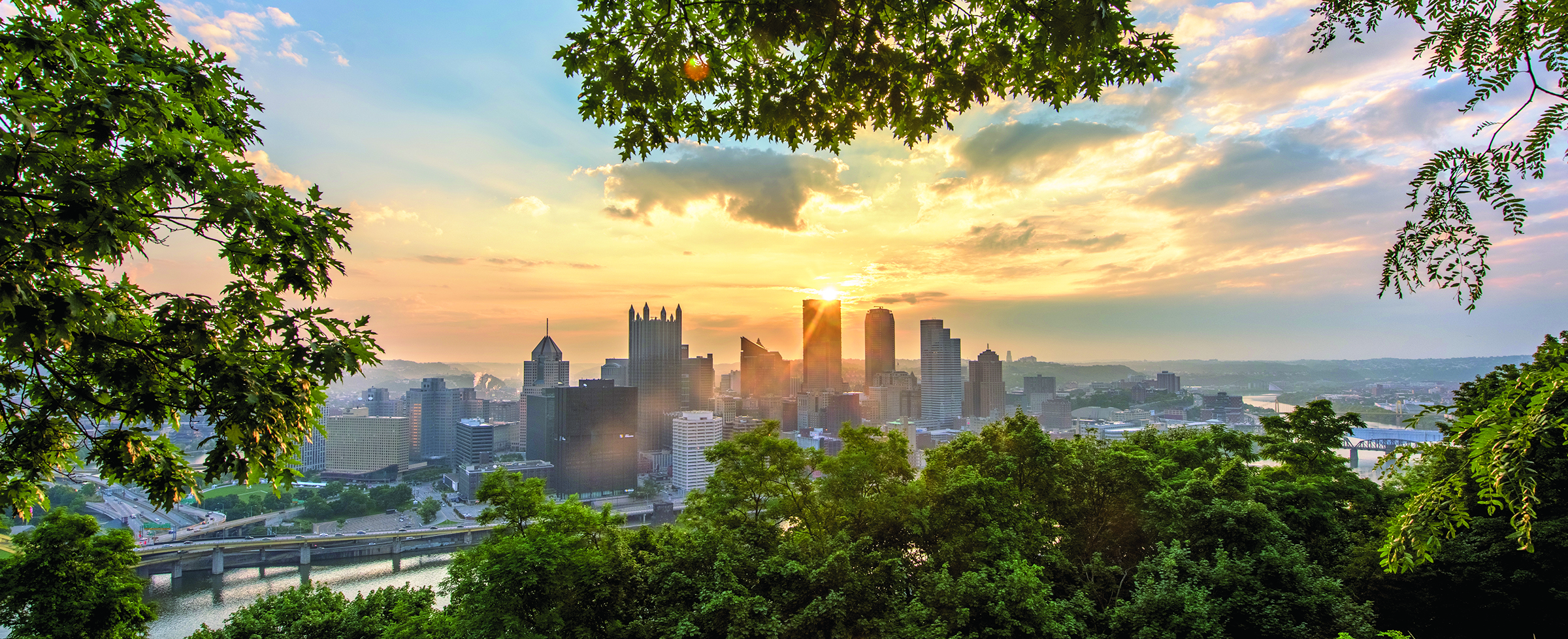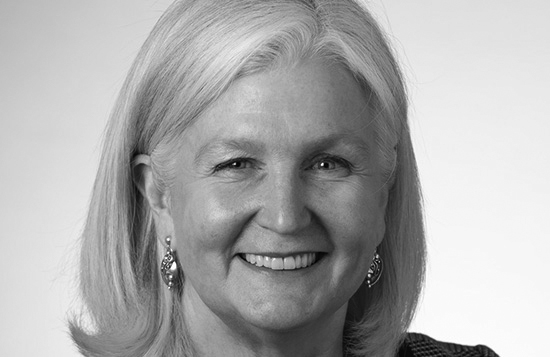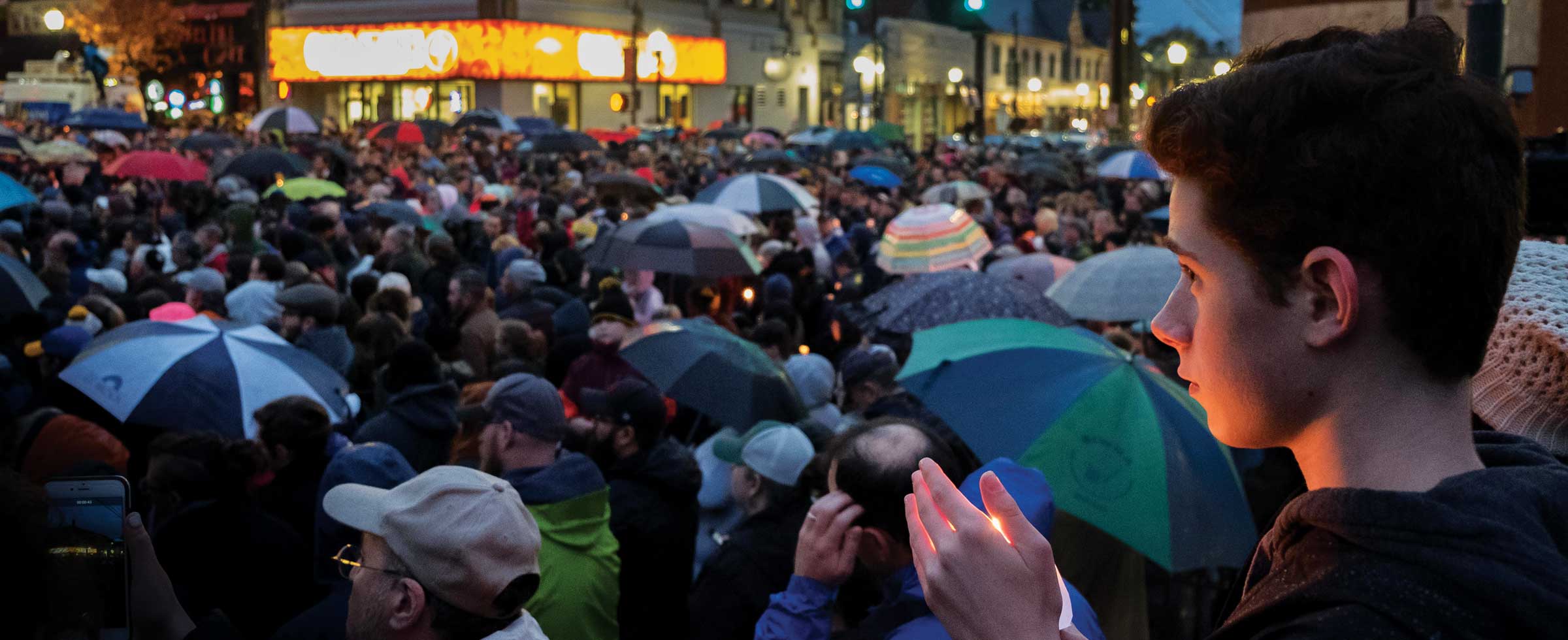Rising to the challenge

Trees on Mt. Washington frame the Pittsburgh skyline at sunrise. Photo by Dave DiCello.
As this 2021 Report to the Community went to press, the United States had just passed a horrific milestone: at least 1 million dead since the onset of the pandemic virus COVID-19 two years ago.
The casualty count outstrips all this country’s combat deaths from all the wars of the 20th century, and translated into life expectancy, the virus carved more than two years off the average life span, the largest decline in 80 years. Closer to home, nearly 3 million Pennsylvanians were infected and 45,000 died with the virus as a direct or probable cause.
All of these statistics are brutal markers of a tragic period that will leave a lasting imprint for decades to come. Beyond the public health catastrophe, the period was marked by what we referred to inside the Foundation as the “multi-pandemic” chapter.It was the phrase we adopted last year to contain — the uncontainable.
As your community philanthropy, we continued to assist the region in recovery from COVID and related issues. Indeed, many of the challenges we faced were continuing episodes of crises that have been with us for decades — among them, homelessness and other forms of housing insecurity, lack of access to health care, inequitable law-enforcement practices, barriers to personal economic advancement, a yawning wealth gap tied to race, and a political–ideological divide tied to geography.
The virus also brought into stark relief the long-standing health and wealth disparities along racial lines, underscored by Allegheny County data. More alarming than those was the continuance of shocking incidents of systemic injustice costing the lives of Black Americans.
Addressing racial inequities has been part of the Foundation’s work for most of its history. We joined many other philanthropic leaders in our region and across the country in acknowledging that past strategies had not been direct enough in challenging systemic discrimination along race and income lines.
During an educational session on expanding Black homeownership, Tammy Thompson of Catapult Greater Pittsburgh — which focuses on helping clients in disenfranchised communities through financial counseling and other services —posed a probing question: “We have been dealing with many of these issues for a long time, so we can have some positive impact in the moment, but are we really making any difference for the long term?”
Thompson’s question has been coming up from other grantee organizations, donors and community partners as well, leading to one of the distinct takeaways from last year’s work. Thankfully, there is noteworthy evidence that people are willing to act more personally and are giving more generously to achieve fundamental social change that will raise quality of life for the long term.
In the financial section of this report, we cite the record-setting $68.8 million in fundraising for 2021, which included a 29% increase from 2020 in giving by individuals. That generosity enabled the Foundation to distribute $57.1 million in grants to 2,850 nonprofits and civic institutions.
And, as you’ll see in this report, our grantees, donors and community partners are coming together with greater determination than we’ve seen in years to do more than Band-Aid philanthropy: Our Center for Philanthropy team gathered some of our donors to deliver $1.1million in grants to out-of-school-time programs as day care networks have struggled.
The Foundation’s New Philanthropic Leaders — a group of professionals ages of 22-40 — did hands-on research, made site visits and awarded grants to out-of-school programs serving Black, Indigenous and People of Color (BIPOC) communities.
While we are proud that a multitude of urgent community needs have been met through the funding, we also have asked: How many grants in any given year are directed beyond merely helping people hold in place? How many are creating opportunities for residents to thrive, especially for those in communities that have experienced decades of neglect?
To answer these questions, we are engaged in a strategic planning process that will demand of us a greater focus on what is required to realize thriving communities.
You’ll see news here of expanding staff capacity to take on these challenges in collaboration with community partners, through the establishment of a Public Health team charged with managing 18 research funds and another now dedicated to engaging in policy and advocacy.
We are grateful more than ever to the vigorous and generous response of our donors, which strengthens our work and, in turn, maximizes their power to create a lasting legacy through their wills and estate plans. And for those who want to get involved, we are working to provide new opportunities for current donors to engage in the work of advancing equity and for the Foundation itself to increase diversity in the donor base.
We are thrilled to have this high level of collaboration, to be at the point of announcing a new plan in 2022 and then to move full force into implementation next year. But no matter the guide we have in front of us, we want our stakeholders to see themselves reflected in it and to be able to say, “We belong here. This is the Pittsburgh way of giving back.”
 |
 |
| Lisa M. Schroeder President and CEO |
John R. McGinley, Jr. Board Chair |
Originally appeared in the 2021 Report to the Community.




